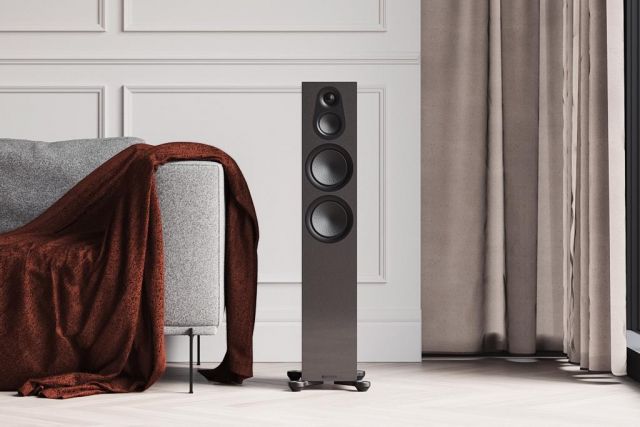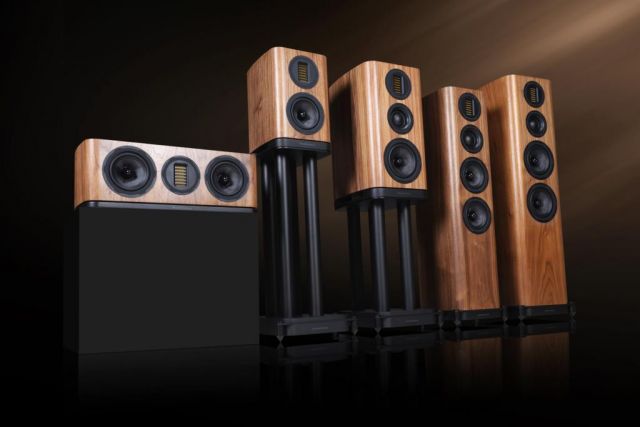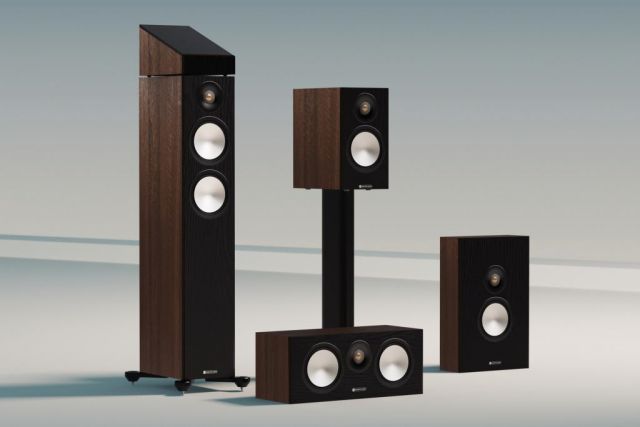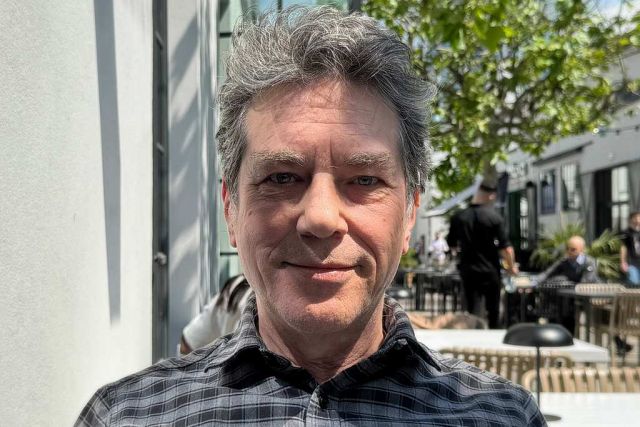
- Interviews
- Posted
Nic Poulson - ISOL-8
Nic Poulson is a telecommunications engineer who studied and worked at the BBC in the eighties as a sound engineer. After leaving the BBC in the early nineties and further developing his passion for audio equipment, Nic has become a well-known designer of electronic circuits with Trilogy Audio Systems company. He also designed and implemented runway lighting systems at various airports. For us the most important thing is that he was one of the first people to notice the problem of power supply systems. That's why he founded IsoTek - in order to deal with this in an appropriate manner.
ISOL-8 brand was born in order to further develop these ideas. Nic was a pioneer in the use of multi-section filters, which were designed to eliminate the problem of noise transmitted between audio elements. Where it all began, how the company operates today and what we can expect from it in the near future?
Designing amplifiers and power distributors for audio systems is surely not an ordinary profession, but you've done even more original things in your life. Earlier we've talked about illuminating runways at various airports and you having to get in there between landing planes. Can you tell us more about that and other weird projects you've been involved in?
It's funny at the time you don’t think of them as at all unusual or weird. It's only when you look back you think - really, did I do that? Other than the many facets of the audio industry, the only other unusual area was in the airfield ground lighting company that a good friend and I founded. We designed and manufactured waterproof high voltage transformers and control circuits that drove the landing lights on airfields. This is not quite as easy as it sounds. Pilots rely on the correct brilliancy of the runway lights to give perspective of distance as they land. We made a great name for ourselves because we found problems with the traditional way of doing things and openly exposed them. Then we dealt with the problems and made better products. By the time we sold the Company (my partner was much older than I and wanted to retire) over 10,000 of our products lit all the major international runways in the UK and many of the military ones at home and abroad. The day you mentioned was amazing. We were making measurements on Heathrow’s main runway in between planes landing. Between each landing we would have two, maybe three minutes to get in there, connect up our instruments, take readings and get back out. To be standing only 10 meters away from Boeing 747 as it landed or took off was just incredible.
How did you get into the hi-fi stuff? When did your audiophile passion become apparent?
It just seemed to be in my DNA from a child. I played with electronics kits from four years of age. I made my first solid state amplifier at seven. It used germanium transistors and ran off two old car batteries. I grew up in a very quiet village with very few young people. Probably because of that, music began to be a major part of my life, although it was more or less exclusively via radio then. By the time I was fourteen I had a fairly serious system bought with lots of hard work in the evenings and weekends. If I remember correctly it was a Logic DM101, Mission arm with a Zenn cartridge. The preamp was some of the modules out of a Naim 32 running off car batteries. The power amps were some MOS-FET amps I had made and these drove Mission 770. It was a very rewarding system. Then I discovered valves...

You have been working as a broadcasting engineer for the BBC, which is of course an institution where lots of hi-fi companies were born, if we can say that. Was working there a useful experience, when you decided to start your own company?
I had only been in college for one year when I got a job with the BBC. It was a very profound moment of my life. I was very young, the youngest that year to join the Film Department at the Ealing Film Studios. It was very old school. It was full of discipline, knowledge, steeped in history and a huge feeling that everything was the way it was because it was just the correct way to do it. It was an amazing place and I wonder where I would be if I hadn’t had the opportunity to be there. Back then you had to be a trainee for three years before you were even allowed to do anything by yourself. But the interest in audio grew more and more strong. I had already designed three valve pre amplifiers for a friend that were marketed under the Foundation brand. But when I was 23 I founded Trilogy. Here for the first time i was doing what felt right. I was still employed at the BBC at that point and was for another three more years.
You are a father of three companies - IsoTek, Trilogy Audio Systems and ISOL-8. Which one was the first and why?
Trilogy was the first. It was some ten years after that I founded IsoTek with my close friend Keith Martin and his business partner Peter Dolding. I did all the product concepts and design work whilst Keith and Peter handled the marketing and business respectively. With IsoTek we made great products and the Company did very well.
Why did you leave IsoTek and started another company making essentially very similar things?
After three years it was clear our paths were to be separate. So ISOL-8 was born. Initially, as all the Intellectual Property of the designs were mine, the products were almost identical with only small improvements. But over the next few years and two more generations of products fundamental concepts evolved and overall performance took leaps forward. ISOL-8 and Trilogy have a ridiculously high R&D budget compared to our turnover. This doesn’t make a lot of business sense, but it does make good sense to me, which sound a little BBC I think.

Quite a lot of British engineers, especially people who had been working for the BBC, decided to make their own speakers. Why didn't you make something like your own version of the famous LS3/5A boxes, and decided to design amplifiers and power accessories instead?
That’s an easy one. I had little or no feeling for speakers. I firmly believe that making exceptional products is a combination of knowledge and intuition, or passion if you prefer. My passion lay firmly with analogue electronics. I also have little or no interest in digital circuits. I understand what’s going on with them but have no feeling about them.
In ISOL-8 catalogue we have basically three price ranges, but within each of them we can choose a power distributor designed to fill our specific needs. You have ones with special sockets for TV screens, models with filtering or DC blocking or both, high-current and low-current outputs... Isn't that a little bit confusing for a normal customer?
Yes I understand that it could be. But its about education. We all, and that includes ISOL-8, our distributors and shops, should understand the reasons why we do what we do. I have no illusions, ISOL-8 manufactures accessories. In other words you do not have to have a conditioner to make a system work. But if we are to make products that improve a €500 system and a €500,000 system, we need a wide range that covers as many differing requirements as possible. There are so many areas of power supply that can be of benefit if tackled -differential mode noise, common mode noise, DC, earth line noise, cross contamination, that to make one product with enough current capacity to supply every possible system would be very expensive and overkill for most users. We have a wide range because we want to make performance improvements available to everyone no matter what sort of system or budget they have.

When we first met, you told us that some devices respond very well to mains filtering, and others work best when there's just DC Blocking and very little filtering. How can we check whether our system is going to like a particular power conditioner or not?
I think when I first started IsoTek, our products were about 60% universal. That is to say they improved 6 out of 10 systems. As the years have moved forwards, by careful design and with new concepts, I believe the figure is now around 90% or higher. So now most of our products will improve the majority of systems. There are now only a handful of products that do not respond well to our conditioners. That of course, may not be the case with other brands. We have worked hard to get to this situation. I decided to do a design that had only DC Blocking for people who had no interest in conditioning but were suffering from DC problems which often manifest as mechanically noisy amplifiers. This design became the basis for the PowerLine Axis and the SubStation Axis. These two products are basically similar but the SubStation offers far more peak current capability and designed for much larger systems. So to answer your question, find a good dealer and discuss three things - your system, your budget and what levels of improvement you are looking for. The answer will be straight forward.
How does this DC Blocking work from the inside and why is it so rarely seen in other products?
To be fair the concept is not complicated at all. Essentially it is just AC coupling. A few expensive and highly regarded audio companies have used this concept within their large amplifiers, but we were one of the first companies I think to use it in our conditioning and distribution products. Obviously the major difference is we do not know what the loads that may be plugged into our products are, so we have to design in such a way to satisfy many conflicting requirements. That was not as easy as one would think.

Many music lovers don't believe that a mains filtering device can really improve the sound of their stereo system. Is there any theoretical proof saying that it really makes sense? When someone asks you what's the difference between power cords for example, what do you usually answer?
I think most audiophiles will say that their system will sound great sometimes and not others. Whilst I accept that atmospheric conditions, for example, can affect this, the major variable is the quality of the mains supply. A properly set up system using mains conditioners will give a far more consistent performance. Quite simply there is your proof. I believe all cables make a difference in the majority of situations. Off course synergy overrides all other factors.
Some audiophiles say, that even when you have an expensive mains conditioner and hi-end power cables, you still have to connect them to a socket in your wall, behind which there can be miles and miles of poor wires, sometimes even made of aluminium or some other old, corroded metal. What do you think about that?
My view of this is very different from the majority. One has to think of not only voltages but also current paths. For example the electrons flowing within the output stage of your amplifier have never at any time been flowing down the national grid lines. This particular current loop stops at the mains transformer. Off course there are countless other loops. And whilst issues occur on the mains, their ability to cause problems with our system reduces with distance. Talking specifically about the mains noise issue, it is often the system itself that is the single worst offender to the systems performance due to the proximity of all components to each other. It was this thought that 14 years ago gave birth to my rule of Cross Contamination. We were, I believe, the first Company to make a distinction here and produce products that filtered each output separately. Thus significantly reducing this Cross Contamination and improving overall performance. Whilst lots of things are out of your control, it is always good to optimize those you can.

Trilogy Audio Systems was out there for quite a long time, but you didn't advertise these products very aggressively, and now you're planning to bring this brand to life. So what are your plans exactly?
British history is full of great designing talent but not always combined with great marketing and business acumen. This was the case with me when I was 24. Trilogy made great products but they were not seen in that many countries. At the time I had little interest in marketing or promoting my designs or myself for that matter. Subsequently, Trilogy took a bit of a back seat when later the airfield lighting Company and IsoTek came along. However, when Simon Dart joined the Company four years ago heading up product development, we began to form a plan. Only a few months after that, Nigel Crump of Symmetry - one of the finest and most respected distributors in Britain - sought to distribute Trilogy. Nigel saw the strong marketing cues within the Trilogy brand and is working with us closely to further the brand both internationally and within our home market. Sadly, just like our car industry, there are very few British owned and British manufactured brands left. And of those, few are truly high end brands. That is the niche where we see Trilogy. With the emphasis on core brand values such as musicality, elegant understated looks, longevity and hand built production. We have just launched only our second ever Integrated amplifier, the 925. I’m really proud of it. This is the first Trilogy product that Simon conceived from the very start from an industrial design point of view. Next year we will launch a bigger phono stage, pre amp and power amp to push our envelope further. Quite astonishingly Trilogy is 25 years old next year. So we have a few ideas up our sleeve too.
What hi-fi system do you use at home?
Normally I use a Brinkmann deck with a Rockport 6000 air baring arm and an old Koetsu Rosewood. CD is an Esoteric K-01 and radio from a McIntosh MR71. A project that I probably will never get started is a Studer C37 which I would like to restore. I bought it from the BBC before I left. Not only are these the best quarter inch tape machines ever made this particular one was used, amongst thousands of other things, to transfer the Queens Christmas speech every year throughout the 70's and 80's. Amplification is all Trilogy. Usually products that I am designing for future release. Speakers include some rather unusual speakers no longer made from Canada, called the System Max, they are a large satellite and sub design. They are flawed being too lean but have an integration and mid range that is still exceptional. I also use a speaker called Kiso from Japan. Hugely expensive for their size but quite capable of being the most natural speaker I have ever heard. I also have some Rogers LS3/5a and KEF's LS50. As an electronics designer its important to hear what my products are doing so its important to have many varied speakers. I hope to add a couple more speakers in the next couple of years when space allows.





